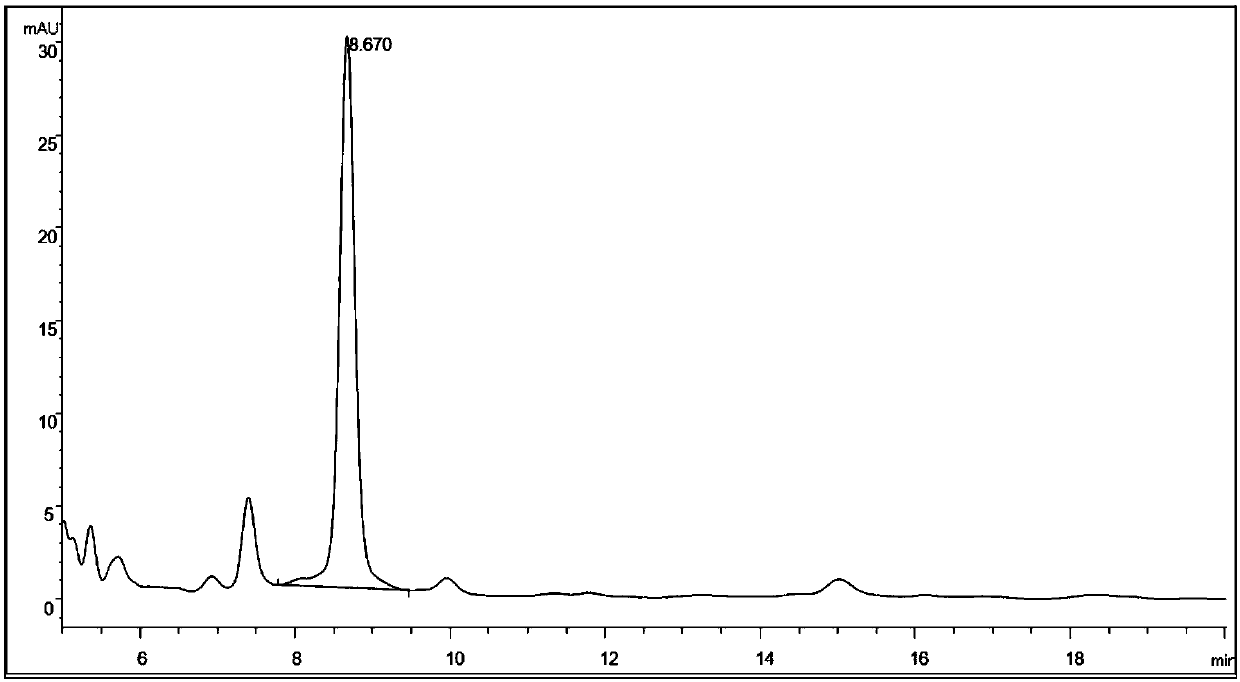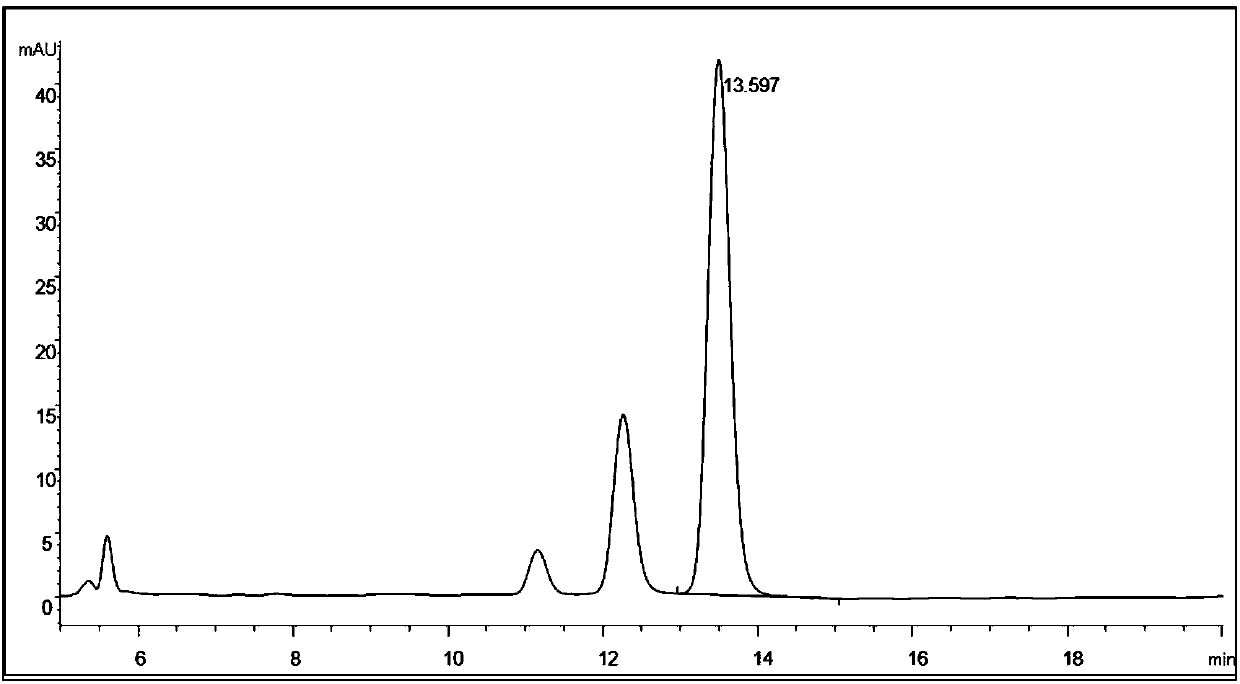Method for rapidly identifying vegetable dyes in dyed textile
A technology for vegetable dyes and textiles, applied in the field of chemical analysis, can solve problems such as low detection efficiency, inability to detect multiple vegetable dyes at the same time, and inability to meet the rapid identification of vegetable dyes on textiles.
- Summary
- Abstract
- Description
- Claims
- Application Information
AI Technical Summary
Problems solved by technology
Method used
Image
Examples
Embodiment 1
[0034] Embodiment 1: the preparation and mensuration of mixed standard solution
[0035] 1) Accurately weigh the standard substances of rubidin, hydroxyrubidin, curcumin, indirubin and crocetin, dissolve them in methanol and make a single standard storage solution with a concentration of 500.00 mg / L;
[0036] 2) Accurately pipette 2.50 mL each of the above five single standard storage solutions into a 25 mL volumetric flask, dilute with methanol to make a mixed standard working solution with a concentration of 50.00 mg / L;
[0037] 3) Then dilute the mixed standard working solution with methanol to prepare a series of mixed standard solutions with concentrations of 50.00, 10.00, 5.00, 1.00, and 0.50 mg / L;
[0038] 4) Measure the above-mentioned series of mixed standard solutions with a high performance liquid chromatograph, take the peak area as the ordinate, and the concentration as the abscissa to carry out linear regression fitting, and the specific chromatographic condition...
Embodiment 2
[0047] Embodiment 2: the mensuration and result judgment of vegetable dye dyed textile
[0048] Test sample 1 is madder dyed cotton cloth, test sample 2 is turmeric dyed cotton cloth, test sample 3 is plant indigo dyed cotton cloth, and test sample 4 is gardenia yellow dyed cotton cloth.
[0049] Accurately weigh 2g of textiles dyed with different plant dyes, add 10mL of methanol, ultrasonic stripping and extraction for 10-20 minutes, collect the extract by filtration, repeat the stripping and extraction for 3 times, combine the filtrate, concentrate with a rotary evaporator, and then use 1mL of methanol Rinse, dissolve, and filter with a 0.46 μm organic microporous membrane to obtain the test solution;
[0050] Measure the above-mentioned sample liquid to be tested according to the high performance liquid chromatography condition in embodiment 1, record chromatogram, refer to figure 2 , image 3 , Figure 4 , Figure 5 . The HPLC chromatograms of the samples to be teste...
PUM
 Login to View More
Login to View More Abstract
Description
Claims
Application Information
 Login to View More
Login to View More - R&D
- Intellectual Property
- Life Sciences
- Materials
- Tech Scout
- Unparalleled Data Quality
- Higher Quality Content
- 60% Fewer Hallucinations
Browse by: Latest US Patents, China's latest patents, Technical Efficacy Thesaurus, Application Domain, Technology Topic, Popular Technical Reports.
© 2025 PatSnap. All rights reserved.Legal|Privacy policy|Modern Slavery Act Transparency Statement|Sitemap|About US| Contact US: help@patsnap.com



